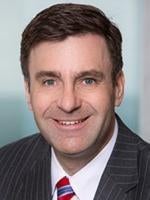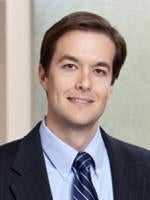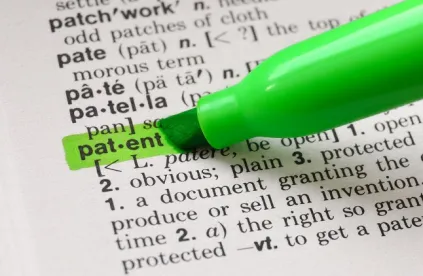We propose that the U.S. Patent and Trademark Office amend its subject matter eligibility guidelines, and all other related guidance, to make clear that claims may be expressly directed to “computer software” consistent with 35 U.S.C. §101. This would bring the Patent Office’s practice in line with recent Supreme Court and Federal Circuit case law, and would help innovators to better protect their software inventions that play such a key role in today’s computer-focused economy.
The Patent Office’s current guidelines can be read to discourage or even prohibit direct claiming of computer software. Even where the crux of an invention is directed to software, patentees currently are motivated to engage in a needlessly inefficient and expensive claim drafting process, whereby practitioners seek to cover software in an indirect manner — with various sets of claims directed to configured systems, media, methods, or other similar language — instead of simply claiming software itself.
There is no reason to require this type of draftsman’s artistry. The U.S. Supreme Court reminded us in Alice that it has “has long ‘warn[ed] ... against’ interpreting §101 in ways that make patent eligibility ‘depend simply on the draftsman’s art’” as opposed to the actual invention.[1]Yet this very artistry is encouraged by the Patent Office guidelines against direct claiming of software, despite recent Supreme Court and Federal Circuit acknowledgement that claims directed to software are not excluded from the scope of §101.[2] It is time to make the Patent Office’s guidelines consistent with the current state of the law.
The Patent Office’s Current Guidelines May Be Interpreted to Exclude Software From the Scope of Patent-Eligible Subject Matter, Which Yields an Incorrect Result
According to §2106 of the Manual of Patent Examining Procedure (“MPEP”), a claim to “a computer program per se” is not directed to a statutory category of patentability. Based on a search of issued patents, the Patent Office apparently has not uniformly applied this guidance to prohibit claims expressly directed to computer software.[3] Nevertheless, most patent practitioners appear to view the Patent Office’s guidelines as prohibiting computer software claims, as evidenced by the routine practice of using various types of method, configured system, or media claims — instead of “computer software” claims — to recite what is primarily a software-focused invention.
In the MPEP, the Patent Office cites a 44-year old Supreme Court case, Gottschalk v. Benson, to support its guidance that “a computer program per se” is outside the scope of patentable subject matter.[4] To the extent the Patent Office interprets its guidance to bar all claims to “computer software,” we submit that such an interpretation is incorrect. Gottschalk had unique facts and involved claims directed to a “formula for converting BCD numerals to pure binary numerals” and the claims in that case would have protected an “algorithm itself.”[5] Further, the Gottschalk claims concerned “a method of programming a general purpose digital computer” and were not directed to computer software itself.[6]
The Supreme Court (in Alice) and the Federal Circuit, in subsequent cases, have very recently addressed claims directed to computer software and have concluded that there is no subject matter bar under §101. The Federal Circuit, addressing Alice at length, clearly and unambiguously recognized in Enfish that there is no per se bar to software patentability. Indeed, the Federal Circuit held that claims “directed to software” can be non-abstract and cover a patent-eligible concept, therefore requiring no further analysis as to eligibility:
Software can make non-abstract improvements to computer technology just as hardware improvements can, and sometimes the improvements can be accomplished through either route. We thus see no reason to conclude that all claims directed to improvements in computer-related technology, including those directed to software, are abstract and necessarily analyzed at the second step of Alice, nor do we believe that Alice so directs.[7]
The Federal Circuit further held that the fact that the patented “improvement is not defined by reference to ‘physical’ components does not doom the claims,” given that “[m]uch of the advancement made in computer technology consists of improvements to software that, by their very nature, may not be defined by particular physical features but rather by logical structures and processes.”[8] The Federal Circuit “do[es] not see in Bilski or Alice, or [its] cases, an exclusion to patenting this large field of technological progress.”[9] The system and method claims at issue “directed to an innovative logical model for a computer database” were accordingly held to be patent-eligible under §101.[10]
The Patent Office’s current guidance therefore appears to contradict recent case law concerning software patentability and instead promotes draftsman’s artistry by requiring patentees to disguise their software-based claims by indirectly claiming software through usage of method, system, media, and means-plus-function claims rather than “software” claims. But the Supreme Court made clear in Alice that it does not give credence to “draftsman’s art” to determine what is within the scope of §101, but instead focuses on the actual inventive subject matter.[11] Again, software inventions are not excluded from §101.
Why should the Patent Office, under the guise of §101, encourage patentees to jump through linguistic hoops that the Supreme Court has already declared meaningless for purposes of §101? Instead, the Patent Office’s guidance should be updated to reflect the concept, now resolved, that software is within the scope of patentable subject matter[12] and allow software to be directly claimed subject to existing case law protections.[13]
A Change to Patent Office Guidelines Would Be the Most Efficient Way to Promote Clarity and Consistency With Respect to Software Inventions
The computer technology community should have certainty that their key software innovations —assuming all other requirements of patentability are met — can be claimed and protected in a straightforward manner. This has added importance today for the U.S. economy, which, having struggled with manufacturing in the recent past, increasingly depends on intellectual property and technical know-how. Given the importance of software, it makes no sense to unnecessarily burden companies in their quest to innovate, protect their patentable inventions, and further contribute to the U.S. economy.
In view of the foregoing, some commentators have suggested extensive changes to §101 in order to address recent confusion and make clear that software innovations are patentable. For example, David Kappos, former director of the U.S. Patent and Trademark Office, recently called for §101 to be abolished.[14] Kappos argued, among other things, that §101 unnecessarily places U.S. innovators at a competitive disadvantage vis-à-vis other countries with respect to software, stifling innovation.[15]
It is true that any confusion concerning §101 would serve as an obstacle to software innovation. However, rather than taking the more extreme step of amending or even eliminating §101, we instead submit that the Patent Office could resolve confusion by amending its guidelines as discussed above, consistent with recent Supreme Court and Federal Circuit law.
With this simple change, inventors could directly claim software in their patent applications instead of drafting various claim sets to indirectly cover their software-based invention. The numbers and types of issued patent claims would accordingly be simplified and streamlined, as would resultant practices like claim construction, patent prosecution, patent litigation and post-grant Patent Office procedures. Efficiencies of time and money would also result. Further, by allowing patentees to directly claim what is believed to be the true invention, the Patent Office and courts would be able to more easily focus on the true purported invention, assess its scope, and test its patentability, validity, infringement and/or enforceability.
With the above change, software innovators could also rest assured that if another company made or sold infringing software the matter could be addressed through a straightforward suit targeting the making or selling of the software itself. This stands in contrast to current efforts to enforce method, system or media claims that indirectly target software, even though it may be the software that truly embodies the key inventive concepts.[16]
For the foregoing reasons, we believe that the Patent Office should consider amending its pertinent guidelines regarding patentability of claims directed to “computer software” so that software may be directly claimed.
[1] Alice Corp. Pty. Ltd. v. CLS Bank Int'l, 134 S. Ct. 2347, 2360 (U.S. 2014).
[2] See, e.g., Enfish, LLC v. Microsoft Corp., 822 F.3d 1327, 1335 (Fed. Cir. 2016) (citing Alice, 134 S. Ct. at 2355-60).
[3] See, e.g., U.S. Patent No. 6,832,726 (independent claim 1 directed to “Computer software comprising computer readable code . . .”).
[4] MPEP §2106 (citing Gottschalk v. Benson, 409 U.S. 63, 72 (1972)).
[5] Gottschalk, 409 U.S. at 71-72.
[6] Id. at 65.
[7] Enfish, 822 F.3d at 1335. [8] Id. at 1339.
[9] Id. (emphasis added). [10] Id. at 1330.
[11] Alice, 134 S. Ct. at 2360.
[12] For example, the Patent Office guidelines could reflect that software is made or manufactured within the meaning of §101. See 35 U.S.C. §101 (covering any “new and useful process, machine, manufacture, or composition of matter, or any new and useful improvement thereof”).
[13] The current body of case law would continue to govern the question of whether any particular invention (software or otherwise) impermissibly covers an abstract idea or preempts an entire field, and similar analyses.
[14] See here.
[15] Id.
[16] The question of whether the sale of a product embodying a patented invention can directly infringe a method claim was raised to the Supreme Court in a 2013 petition for writ of certiorari. Mirror Worlds v. Apple Inc., 2012 U.S. Briefs 1158 (U.S. Mar. 21, 2013). The Supreme Court denied certiorari, and therefore did not resolve the issue.





 />i
/>i

